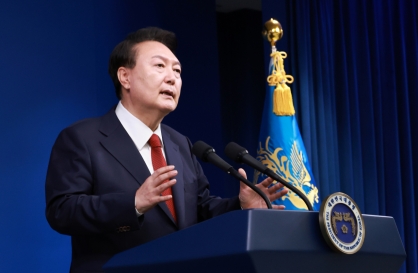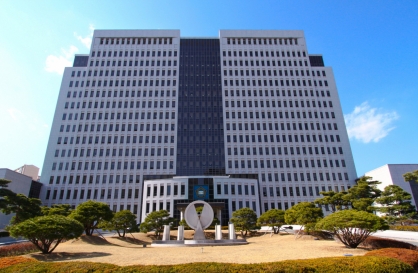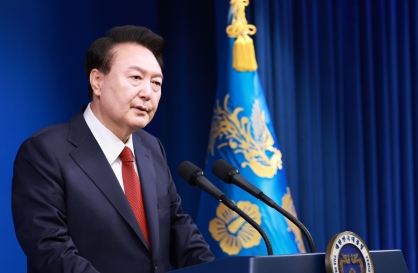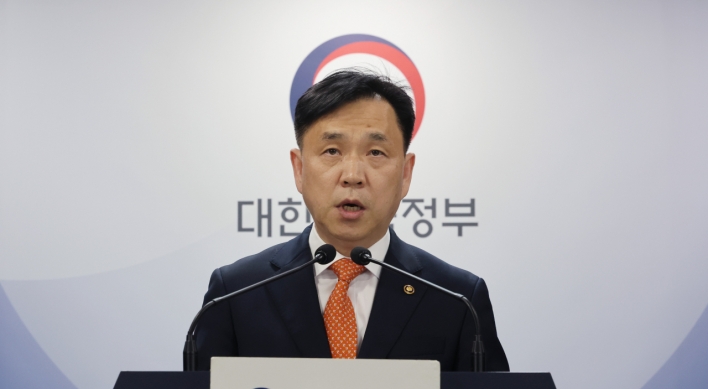S. Korea likely to fall short of emissions reduction target
By Kim Young-wonPublished : Feb. 12, 2013 - 20:57
President Lee Myung-bak’s plan to reduce greenhouse below emissions to 30 percent below projected levels by 2020, one of his flagship green growth initiatives, may fail to reach its target, according to the latest plan for electricity supply and demand issued by the Ministry of Knowledge and Economy.
Critics say that the outgoing president’s “pipe dream” goals could receive backlash from the international community and damage the credibility of the nation.
The ministry rolled out the sixth master plan for supply and demand of electricity last month and held hearings last week with civic environmental groups, experts and citizens.
The amount of greenhouse gases emitted in 2020, based on the plan, when including emissions from newly planned generators, is estimated at 268 million tons of carbon dioxide equivalent. The figure is 10 percent higher than the initial government’s target, 242 million tons of CO2 equivalent.
The outgoing president reiterated the goal of the 30-percent reduction in late 2009 at a conference of the parties to the United Nations Framework Convention on Climate Change.
And in 2011 the government set a reduction rate of 26.7 percent for greenhouse gas emissions from electricity generation.
Emission reductions in generating power are significant as such emissions are expected to take up around 30 percent of the 813 million tons of gases emitted in 2020.
The average power demand will likely increase by 3.7 percent yearly, resulting in 631 million kilowatts of demand in 2020, according to the ministry’s master plan.
The yearly demand is 19.3 percent higher than the one expected by the Lee government at 529 million kilowatts with an annual increase of 1.7 percent.
The amount of greenhouse gases emitted in producing 631 million kilowatts is 289 million tons of CO2 equivalent.
If all goes according to the plan, the reduction of greenhouse gases from power generation is likely to hover around 7 percent, less than one-third of the 26.7 percent reduction rate.
However, the plan requires 18 new generators, 12 of which will be coal-powered, and allocates the construction projects to conglomerates including Samsung, SK and GS.
“The power demands surveyed by the ministry have been overestimated and their plan is hard to accept since it was announced amid the power void (created before President-elect Park Geun-hye’s inauguration on Feb. 25),” a civil activist said.
However, the ministry said the numbers for power supply and demand were realistic since they affected lives of the people, adding “the previous goals were a bit idealistic and hard to achieve.”
By Kim Young-won (wone0102@heraldcorp.com)
Critics say that the outgoing president’s “pipe dream” goals could receive backlash from the international community and damage the credibility of the nation.
The ministry rolled out the sixth master plan for supply and demand of electricity last month and held hearings last week with civic environmental groups, experts and citizens.
The amount of greenhouse gases emitted in 2020, based on the plan, when including emissions from newly planned generators, is estimated at 268 million tons of carbon dioxide equivalent. The figure is 10 percent higher than the initial government’s target, 242 million tons of CO2 equivalent.
The outgoing president reiterated the goal of the 30-percent reduction in late 2009 at a conference of the parties to the United Nations Framework Convention on Climate Change.
And in 2011 the government set a reduction rate of 26.7 percent for greenhouse gas emissions from electricity generation.
Emission reductions in generating power are significant as such emissions are expected to take up around 30 percent of the 813 million tons of gases emitted in 2020.
The average power demand will likely increase by 3.7 percent yearly, resulting in 631 million kilowatts of demand in 2020, according to the ministry’s master plan.
The yearly demand is 19.3 percent higher than the one expected by the Lee government at 529 million kilowatts with an annual increase of 1.7 percent.
The amount of greenhouse gases emitted in producing 631 million kilowatts is 289 million tons of CO2 equivalent.
If all goes according to the plan, the reduction of greenhouse gases from power generation is likely to hover around 7 percent, less than one-third of the 26.7 percent reduction rate.
However, the plan requires 18 new generators, 12 of which will be coal-powered, and allocates the construction projects to conglomerates including Samsung, SK and GS.
“The power demands surveyed by the ministry have been overestimated and their plan is hard to accept since it was announced amid the power void (created before President-elect Park Geun-hye’s inauguration on Feb. 25),” a civil activist said.
However, the ministry said the numbers for power supply and demand were realistic since they affected lives of the people, adding “the previous goals were a bit idealistic and hard to achieve.”
By Kim Young-won (wone0102@heraldcorp.com)





![[K-pop’s dilemma] Can K-pop break free from ‘fandom’ model?](http://res.heraldm.com/phpwas/restmb_idxmake.php?idx=644&simg=/content/image/2024/05/09/20240509050541_0.jpg&u=20240509173751)




![[News Analysis] Yoon's first 2 years marked by intense confrontations, lack of leadership](http://res.heraldm.com/phpwas/restmb_idxmake.php?idx=644&simg=/content/image/2024/05/09/20240509050612_0.jpg&u=20240509233252)







![[Today’s K-pop] NCT’s Mark to drop 1st solo album in February 2025](http://res.heraldm.com/phpwas/restmb_idxmake.php?idx=642&simg=/content/image/2024/05/10/20240510050597_0.jpg&u=)